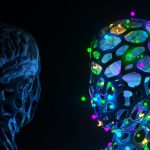Excitement and uncertainty continue to grow around artificial intelligence as OpenAI CEO Sam Altman publicly reflected on the swiftly advancing impact of AI across various sectors. Sharing his personal view in a recent blog post, Altman suggested that humanity has already crossed a significant threshold in AI development. As AI systems continually improve, observers note both tangible gains and deeper questions regarding future risks and responsibilities. With digital tools such as ChatGPT becoming woven into daily workflows, many question what the next decade holds for society and industry.
Reports in recent years have touched on incremental improvements in AI, especially with models like OpenAI’s GPT series and the increasing interest in AI governance debates. Previous discussions highlighted the promise and limitations of AI in labor automation and scientific research, but often lacked concrete predictions on timelines for autonomous robots or the scale of intelligence expansion Altman now anticipates. While energy consumption statistics for products such as ChatGPT were seldom publicized earlier, recent disclosures add new dimensions to public understanding. The emphasis on alignment and social risks echoes persistent concerns voiced by AI ethics critics, yet Altman’s warnings about the inadequacy of current systems and his focus on the need for large-scale social adaptation update the narrative to match current technological momentum.
How Will AI Advance by 2025 According to Altman?
Sam Altman pointed to 2025 as a milestone year in AI’s evolution, particularly in complex reasoning and coding abilities. By that time, he expects AI systems to produce original scientific concepts, with autonomous robots potentially operating in real-world environments by 2027. These projections reflect a belief that AI is already driving substantial, if gradual, societal changes.
What Role Will Infrastructure and Resources Play?
Key to these developments is the evolution of AI infrastructure, spanning computing resources, servers, and data centers. Increasing automation and streamlined deployment could drive the cost of deploying AI systems toward the cost of electricity, greatly expanding access. Altman emphasized how such advancements may “supercharge scientific discovery… and unlock new frontiers in health care, materials science and space exploration.” He suggests that compressing years of research into months or weeks could shift the pace of progress across multiple industries.
Do Efficiency and Human Purpose Remain at the Center?
Efficiency in AI operations was explored through metrics: Altman revealed a typical ChatGPT query requires just 0.34 watt-hours of energy and 0.000085 gallons of water, which is minimal compared to common household tasks. Public concern often centers on AI disrupting the workforce, but Altman countered that “AI will amplify human creativity and productivity, not replace it.” He further commented,
“A small new capability can create a hugely positive impact.”
Still, he raised unresolved challenges in aligning AI systems with “long-term human values,” referencing social media engagement algorithms as examples of misaligned outcomes causing negative societal effects.
Altman’s remarks underline uncertainties about how society will adapt as AI capability accelerates. The threat, he argued, lies less in the idea of AI replacing humans, and more in the risk that social, economic, and governance structures may lag behind. Engaging in widespread discussions about guiding values and policy now, he urges, is preferable before the technology becomes too entrenched to meaningfully steer. “The sooner the world can start a conversation about what these broad bounds are and how we define collective alignment, the better,” Altman wrote.
Looking at the landscape described by Sam Altman and comparing it to earlier commentary, it is evident that recent transparency around AI’s resources and practical energy demands helps clarify misconceptions. The focus on alignment reflects recurring concerns in the broader AI community, emphasizing that technological progress cannot substitute for ethical planning and societal preparedness. Observers monitoring OpenAI’s trajectory and Altman’s forecasts may find it useful to closely track developments in both policy and infrastructure investment. For researchers, practitioners, and citizens, understanding the trajectory of AI evolution and the importance of revisiting regulatory frameworks can guide more adaptive responses in the coming years.










